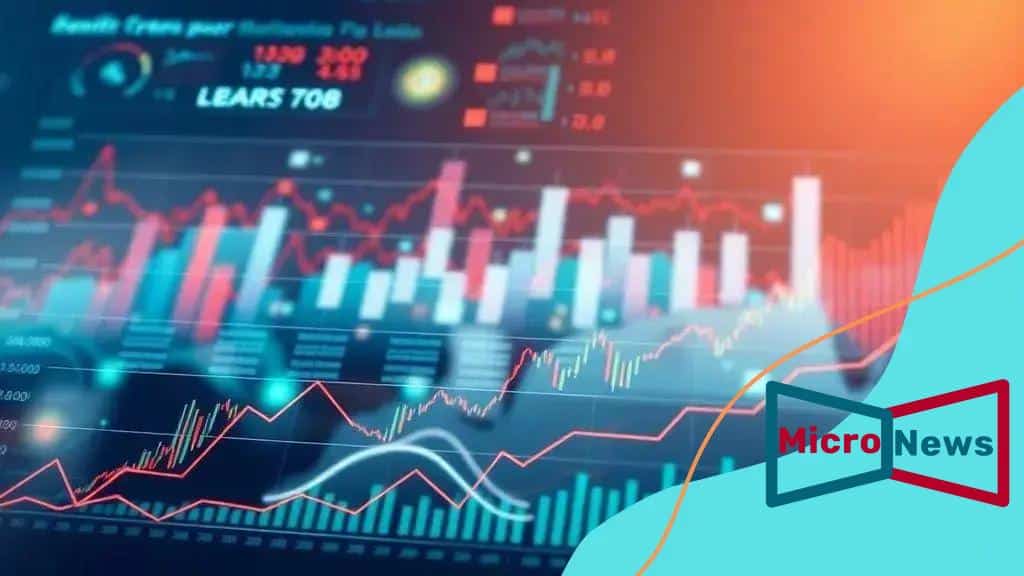Q2 2025 GDP revised to 3.3%: What it means for you

The revised Q2 2025 GDP of 3.3% indicates economic growth that positively impacts employment rates, consumer spending, and sectoral performance, while presenting some risks like inflation and geopolitical tensions.
Q2 2025 GDP revised to 3.3% caught plenty of attention, didn’t it? With changes in the GDP, many are left wondering how this shift influences our daily lives and future investments.
Understanding the revised GDP figures

Understanding the revised GDP figures helps us grasp how our economy is performing.
The recent adjustments reflect changes in economic activities, consumer behavior, and government policies.
In the second quarter of 2025, the GDP was revised to 3.3%, a significant indicator of economic growth.
The importance of GDP
GDP, or Gross Domestic Product, is a broad measure of economic activity. It is crucial because it indicates the health of an economy and informs investment decisions. When the GDP rises, it usually signals a vibrant economy.
Factors Influencing GDP Revisions
Several factors can lead to GDP revisions:
- Changes in consumer spending patterns
- Adjustments in business investments
- Government spending and policy decisions
- Trade balance fluctuations
Each of these elements plays a vital role in shaping the overall economic landscape. For example, increased consumer spending typically drives GDP growth, showing confidence in the economy.
Now, with the revised GDP figure of 3.3%, it’s essential to analyze the broader implications.
Higher GDP often means job growth and rising wages, which benefits the average citizen. On the other hand, if it rises too quickly, inflation could become a concern.
Revising Economic Forecasts
After GDP revisions, economists often tweak their predictions about future economic conditions.
They analyze new data to foresee potential challenges or opportunities. Understanding these revisions will help stakeholders make informed decisions.
Finally, keeping track of the revised GDP is vital for anyone who wants to stay informed about market trends.
This knowledge not only helps businesses strategize but also empowers consumers to make better financial choices.
Impact on consumer spending
The impact on consumer spending due to GDP revisions is significant. A revised GDP of 3.3% signals changes in the economic environment that affect how people spend their money.
When GDP increases, it typically indicates that economic conditions are improving, leading to increased confidence among consumers.
How GDP Affects Consumer Behavior
When the economy grows, people tend to feel more secure in their jobs. This security translates into a willingness to spend, which can further drive the economy forward.
For instance, as wages rise and employment rates improve, consumers are more likely to purchase big-ticket items, such as cars or homes.
Factors Influencing Consumer Spending
Several key factors influence how the revised GDP impacts consumer spending:
- Increased disposable income
- Enhanced consumer confidence
- Access to credit and loans
- Inflation rates
As disposable income rises, people have more money to spend after their essential expenses. This increased financial flexibility encourages more significant expenditures.
Furthermore, when income levels rise, consumer confidence also gets a boost. People feel more optimistic about their financial futures and are likely to invest in experiences and goods, from dining out to traveling.
Here, access to credit becomes crucial, as loans can help facilitate purchases and projects that consumers desire.
However, inflation can dampen consumer spending, even with rising GDP. If prices rise faster than wages, consumers may hesitate to spend.
This creates a complex dynamic between GDP growth and consumer behavior, illustrating how interconnected these factors are.
Current Consumer Trends
Monitoring current trends in consumer spending can provide insights into whether people are responding positively to GDP changes.
Recent data show shifts in spending habits, such as increased interest in online shopping and sustainable products, as consumers adapt to new economic realities.
The link between a revised GDP and consumer spending is evident. As the economy evolves, so do consumer behaviors, emphasizing the importance of understanding these shifts.
Trends in employment and wages
Understanding the trends in employment and wages is crucial for grasping how revised GDP figures affect the economy. With the GDP for Q2 2025 revised to 3.3%, these trends reveal significant insights into the labor market.
Employment Growth
When GDP increases, a common outcome is improved job growth. Employers often respond to rising demand by hiring more workers.
This trend leads to a reduction in unemployment rates, which is a positive sign for the economy.
For instance, if businesses anticipate higher consumer spending, they may expand their workforce to meet this demand.
Factors Affecting Wages
As employment increases, wages generally follow suit. Several factors can influence wage dynamics:
- Market demand for specific skills
- Increased competition among employers
- Inflation and cost of living adjustments
- Changes in labor laws
When there are more job openings, companies often need to offer higher salaries to attract talent. Additionally, workers who feel confident in their job security are more likely to negotiate for better pay.
However, the relationship between employment and wages can sometimes be complicated. For example, if too many jobs are added too quickly, it can lead to inflationary pressures, where the cost of living rises faster than wages.
This situation can erode purchasing power, affecting consumer spending and overall economic health.
Current Employment Trends
Recent data shows shifts in employment trends, particularly in industries like technology and healthcare. These sectors are seeing robust growth due to changes in consumer behavior and technological advancements.
Additionally, remote work has reshaped traditional employment structures, allowing flexibility that was not previously common.
This evolution affects how people seek employment and what they value in potential jobs. Wages in these sectors are often increasing to reflect the demand for skilled labor and the new work dynamics.
As these employment trends continue to evolve, they provide a clearer picture of how GDP revisions impact not just business but also individuals, highlighting the interconnectedness of economic indicators.
Sectorial performance analysis
The sectorial performance analysis provides insights into how different industries respond to changes in the economic landscape, particularly following the revised GDP figures.
With Q2 2025 GDP now at 3.3%, understanding which sectors thrive and which lag is crucial.
Industry Growth Trends
Various industries react differently to economic growth. Some sectors commonly associated with accelerated growth during GDP increases include:
- Technology
- Healthcare
- Consumer goods
- Construction
The technology sector often sees increased investments as firms rush to innovate and enhance productivity.
The demand for tech solutions grows as businesses seek to streamline operations and engage consumers more effectively. In healthcare, an aging population and technological advances lead to continuous expansion.
Identifying Struggling Sectors
On the flip side, some industries face challenges during economic fluctuations. Sectors such as:
- Retail
- Manufacturing
- Hospitality
- Transportation
These face hurdles like shifting consumer preferences and rising operational costs. For example, traditional retail stores may struggle against the growth of e-commerce, impacting their overall performance in the market.
Furthermore, transportation and hospitality can be heavily influenced by external factors, including global events or changes in leisure spending.
A robust economic environment may help these sectors, but they require careful navigation of their unique challenges.
Analyzing Sectorial Data
Data analysis helps identify specific performance metrics for each sector. Both growth rates and profitability margins are critical indicators of a sector’s health. Tracking these metrics provides valuable context to the overall economic situation.
Investors and policymakers often look at sector performance to make informed decisions. For instance, if the technology sector shows strong growth relative to others, it may indicate a shift in investment priorities.
In conclusion, a thorough sectorial performance analysis reveals how diverse industries adapt to economic changes. As the revised GDP impacts spending and investment, understanding these trends equips stakeholders with the knowledge to respond effectively.
Future economic outlook
The future economic outlook following the revision of Q2 2025 GDP to 3.3% presents both challenges and opportunities. As the economy adapts to these changes, several factors will influence growth trajectories.
Positive Indicators
Several indicators point to a favorable economic future. Increasing consumer confidence often leads to higher spending.
When people feel secure about their jobs and financial situations, they tend to spend more on goods and services.
Key Factors Shaping the Future
Here are some factors that will shape the economic landscape:
- Technological advancements driving productivity
- Shifts in global trade patterns
- Government fiscal policies
- Changes in consumer preferences
Technological advancements are expected to enhance productivity across various sectors. Companies that invest in innovation will likely outperform their competitors.
Additionally, policymakers may introduce fiscal policies that stimulate growth, such as tax cuts or increased public spending.
However, global trade patterns can also have a significant impact. As countries negotiate trade deals, these agreements can affect local industries positively or negatively, depending on their international competitiveness.
Potential Risks

While there are many positive signs, potential risks also exist. Economic uncertainties, such as inflation and geopolitical tensions, can disrupt growth. Inflation, in particular, may erode purchasing power, affecting consumer expenditures.
This uncertainty can lead to a cautious approach among businesses and consumers. If people fear that rising prices will diminish their income, they might alter their spending habits.
As the economic landscape evolves, understanding the future economic outlook is essential. Stakeholders, including businesses and policymakers, must be informed and ready to adapt to upcoming changes.
In summary, the revised GDP of 3.3% for Q2 2025 brings about a mix of opportunities and challenges for various sectors.
Analyzing trends in employment, wages, and sectorial performance helps individuals and businesses understand how to navigate the economic landscape effectively.
While some industries may thrive, others could face obstacles due to changing consumer behavior and external factors. Staying informed and flexible will be key to leveraging the positive aspects of this economic shift and preparing for potential risks.
FAQ – Frequently Asked Questions about Economic Outlook and GDP
What does the revised GDP figure indicate?
The revised GDP figure of 3.3% indicates that the economy is experiencing growth, suggesting increased consumer spending and business investments.
How does GDP affect employment rates?
When GDP rises, it typically leads to job growth as businesses expand to meet the higher consumer demand, resulting in lower unemployment rates.
Which sectors are likely to thrive in a growing economy?
Sectors like technology, healthcare, and construction often thrive in a growing economy due to increased investments and consumer demand.
What risks could hinder economic growth in the future?
Potential risks include inflation, geopolitical tensions, and changing consumer behaviors that can disrupt market stability and growth prospects.





